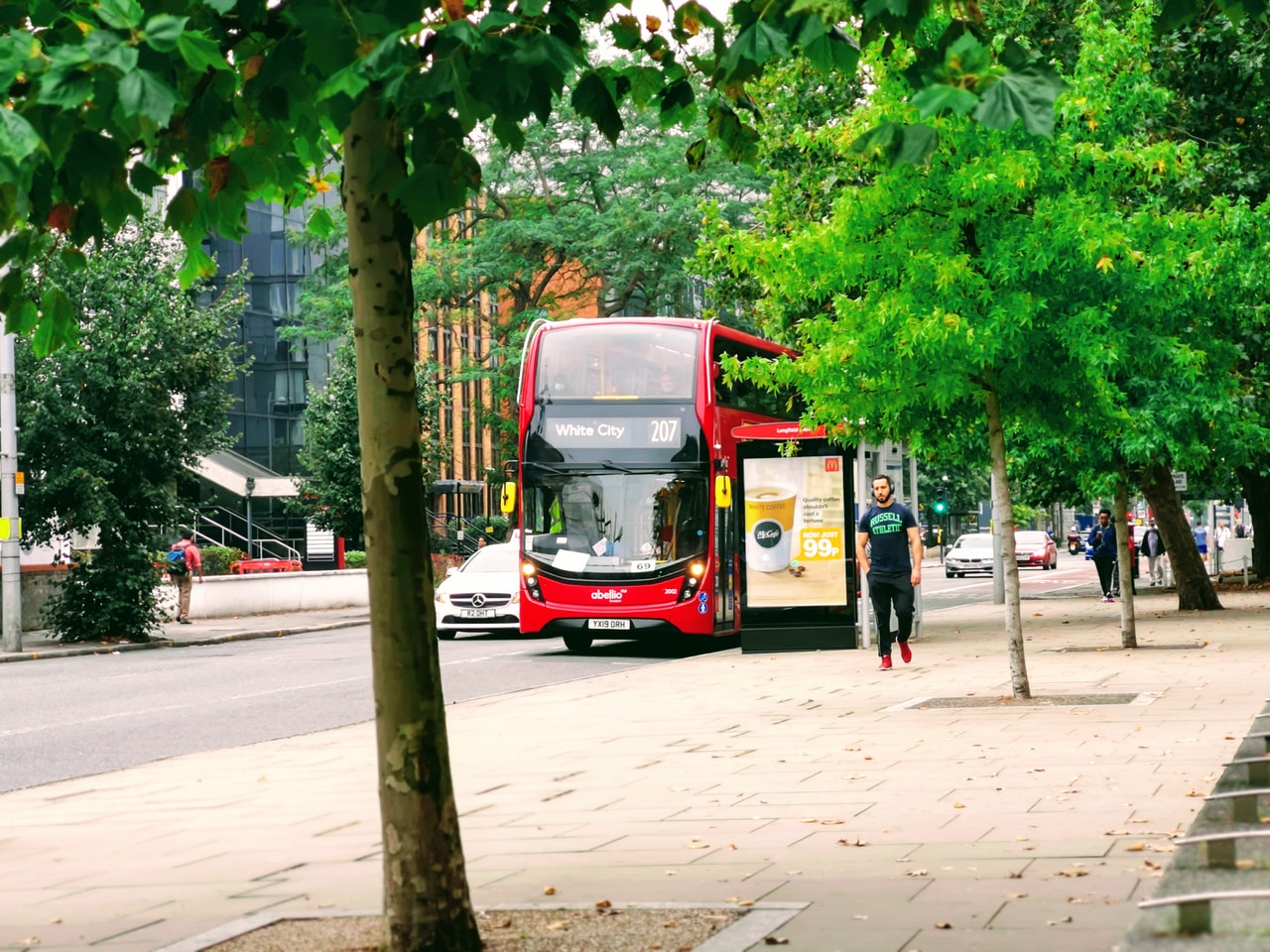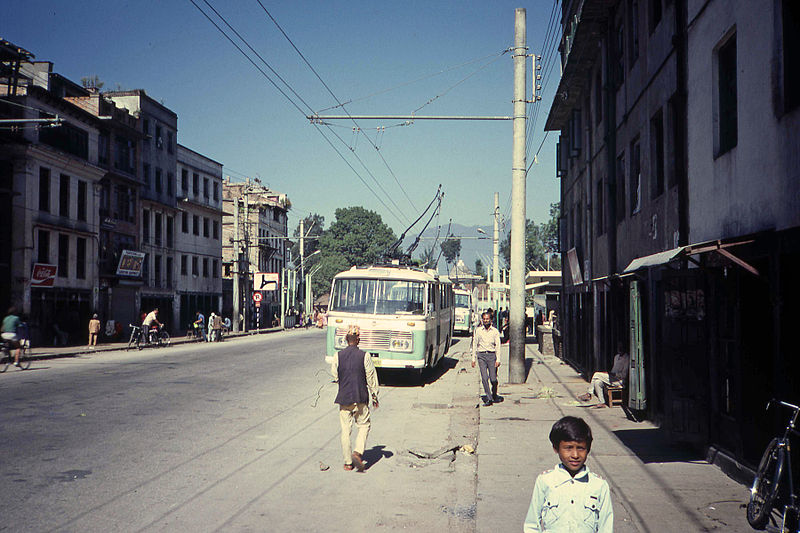Urban Public Transportation | Financing | Infrastructure | Local Governments | Public Investment

NEPAL IS INCREASINGLY being exposed to the malign forces of bad public transport systems, particularly cities. Take its capital Kathmandu, for instance. Its population has increased more than 60% in the last decade, resulting in more than 400% increase in vehicles. Some estimates suggest that about 450,000 vehicles are in the valley alone. Increasing vehicle ownership, rapid urbanization, and narrow roads are fuelling more traffic jams. Poorly financed transport systems have led to inefficiency with added financial burden on households. Deteriorating air quality is raising health concerns. Rising import of private vehicles is another addition to the list of problems.
Demand for two-wheelers and four-wheelers in the country is skyrocketing. Annual growth rate of vehicle registration exceeds 16 percent. Number of vehicles increased from 0.48 million in 2005 to 3.22 million in 2018.
In 2018 alone the Department of Transport Management reported that 96% registered passenger vehicles were private. Only 4% represented public vehicles. Motorbikes are the most registered vehicle (78%). Car registration is increasing at an annual rate of 12%. Their contribution to road congestion and air pollution has exponentially risen over the years. Yet there are no signs urban population and demand for private vehicles will slow down in the coming days.
The government apathy towards improving the crumbling and unsustainable transport system is a sign of trouble, though doable. Implementation of strong policies, strict enforcement of existing laws and financing alternative means of public transport are necessary to reverse this notorious trend. Planners will have to think about their sustainability, too.
The stodgy public transport system demands massive investment. But challenges are myriad: financing, technology and infrastructure gap at the resource level, knowledge gap at the planning level, lack of willpower at the political level and overall policy gaps.
For years now, however, Kathmandu’s city planners have been contemplating different alternatives, though. They are looking into the feasibility of different mass transport alternatives, such as metro rail, bus rapid transit and urban cable car system, but have failed to agree on one solution so far. In the meantime, transport problems have only multiplied.
In this compilation, we take a look at a few public transport systems around the world, and their financing and operations:
Hong Kong’s MTRC and Land Value Capture strategy
Hong Kong’s experience of Land value capture (LVC) is promoted as a model for developing countries seeking to pursue sustainable urbanization, including mass transit rail network. Its railway network’s efficiency and profitability is attributed to the LVC strategy developed by its operating company, the Mass Transit Railway Corporation (MTRC). The strategy recoups its initial investment and revenues from gains in land value and real estate activities
MTRC, a majority government owned (75%) public transport operator, follows a “rail and property” development model. The gains from property development around railways stations and depots are used to cover capital costs of railway development along with their running costs.
Sydney Light Rail
Conceptualisation
Sydney saw its first tram in the 19th century, which was horse-drawn. The tram was built not to serve passengers, but to supply the city with goods and return cargo from the docks at Circular Quay. Serving the passengers was an after-thought. Then came the steam tramway and now electric tramway (electrification started in 1898).

Financing
Transport for NSW, a state government body, owns the network. Day-to-day operations are handed to Transdev—a France-based international private sector firm that specialises in public transport. The body operates bus, ferry, light rail and rail services in many parts of Australia and New Zealand under the subsidiary of Transdev Australasia.
Transdev is now working on Sydney’s light rail expansion works—the Parramatta Light Rail project—under the Supply, Maintain and Operate contract. The project is planned for completion by 2023 and is expected to serve the growing economic needs of Sydney, which is also growing demographically.
Revenue
The costs of operating the Sydney Light Rail network are funded through fares income (passenger ticket revenues), contract revenues from private transport companies, government subsidies to provide social services and revenues from leveraging assets, such as stations and right-of-way.
Berlin U-Bahn (Underground metro)
Conceptualisation
The creation of the Berlin U-Bahn (BBH) is credited to Werner Siemens, who in 1880, thought of building an urban railway in Berlin. The first construction of the railway began in 1896. It was built in three different stages: up to 1913 small profile networks were constructed; large profile networks were then introduced till 1930. The U-Bahn saw further developments after 1953.
 Financing
Financing
Berliner Verkehrsbetriebe (BVG), a state-owned transport company maintains and operates the U-Bahn. BVG also operates a network of buses and tram and ferry services. BVG has various subsidiaries which provide financing.
One of the subsidiaries, BBH provides commercial services—IT, human resource, finances—and carries out the investment management of the BVG. Another subsidiary BVG-FFG finances the procurement of metro and tram vehicles.
Mass Rapid Transport (MRT) in Singapore
Conceptualisation
The idea of building the MRT emerged from a forecast by city planners, who in 1967 concluded the need for a rail-based urban transportation system by 1992. It began its operation in 1987 covering only 6 kms. Later, Singapore expanded the rail network more comprehensively.
Financing
In its early years, the MRT system was operated by the state, and then its management and operation was handed over to SMRT corporation, a government subsidiary. It was then managed and operated by two listed companies, SMRT and Singapore Bus Service (SBS) Transit, which is Singapore’s largest public bus operator. The MRT now runs on a public-private hybrid model where operations are privatized, but operating assets are state-owned.
SMRT and SBS Transit are rival multimodal public transport operators—mainly bus and rail services. SMRT is a subsidiary of Temasek Holdings, a Singaporean state holding company, while SBS Transit is a public company, a subsidiary of multinational land transport company ComfortDelGro Corporation.
Revenue
The firms make revenue through rail, bus and taxi passenger fares, management of transit retail and advertising spaces, and properties and retail management. SMRT also provides engineering solutions and transport-related technical and consulting services both locally and overseas.
London Buses
Conceptualisation
London Buses was formed after the UK government passed the Greater London Authority Act 1999 that gave Transport for London (TfL) the authority to manage bus services—which was until then controlled by London Regional Transport (now a defunct organisation).

Financing
TfL, which controls London Buses, is funded through a variety of sources, including fares, commercial activities such as advertisements, congestion charge income from private vehicles, central and local government grants and borrowing. It borrows from ‘a variety of sources using a combination of mechanisms, including bonds, commercial paper, loans for specific projects from the European Investment Bank and the Public Works Loan Board’.
We are a public body, with no shareholders or parent companies, which means we can reinvest every pound of income in the transport network. For every pound we receive, around 79% is spent on the everyday running costs of the network and around 21% on improving it for the future.
Operations
London Buses follows a Tendering system model. Bus operators bid for routes, and those awarded with the London Buses contract provide staff with buses. In return, they are paid for every mile that each bus runs.
Metrocable (Medellín)
The City Council of Medellín, Colombia, started metro cable operation in 2004 to provide transport service to people living on the steep hills (which are unreachable through MedellínMetro). It was designed to promote social inclusion and equitable urban mobility, and to improve the quality of life of the residents of the hillside barrios.

The Metro Cable, along with Medellín Metro, which compliment the metro cable, is a part of SITVA, the integrated public transport system of Aburrá Valley. SITVA integrates other three transit types; Metroplús—a Bus Rapid Transit (BRT) system; EnCicla—a bicycle sharing system with a fleet of 1,300 bicycles; and Translohr—a tram transit system. Medellín, located in Aburrá Valley, is the second largest city in Colombia.
These public transport systems serve as good examples for Nepal that building an efficient public transport system is not a far-fetched feat. They also provide important lessons.
One thing these transport systems have in common is—the priority their governments accorded to the public transport system many decades ago. Governments didn’t shy away from making large investments because there were larger socioeconomic gains to it.
These systems also reveal that large and growing cities require a good mix of different transit types to serve their growing demographic and economic needs. As these systems evolved, it paved way to add new amenities and new line of services, identify new ways of financing and revenue streams, and forge new partnerships.
On the contrary, Nepal shut down its trolly bus operations after running it for over 25 years, instead of reforming or building on it, leaving the public transportation system to unscrupulous private operators and without oversight.

Yet, one important lesson that Nepal cannot miss out on is—to build a sustainable transport system, private sector engagement is critical, and federal and sub-national governments should work in public-private partnership to finance, build and/or operate the public transportation. Collaborating this way makes project financially sustainable, allows projects to be completed sooner and most importantly make it a possibility in the first place.
Read More Stories
Kathmandu’s decay: From glorious past to ominous future
Kathmandu: The legend and the legacy Legend about Kathmandus evolution holds that the...
Kathmandu - A crumbling valley!
Valleys and cities should be young, vibrant, inspiring and full of hopes with...
Today’s weather: Monsoon deepens across Nepal, bringing rain, risk, and rising rivers
Monsoon winds have taken hold across Nepal, with cloudy skies and bouts of...